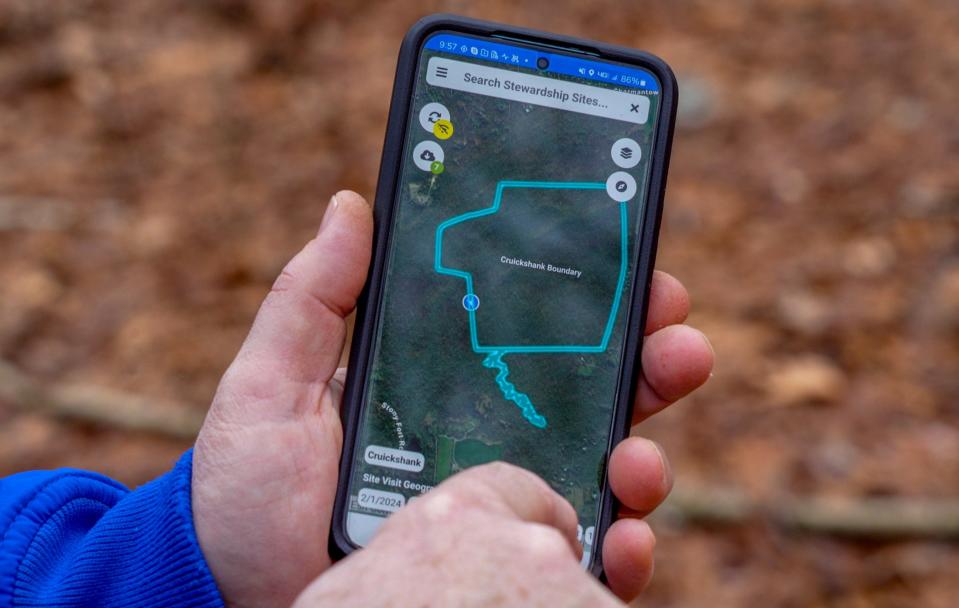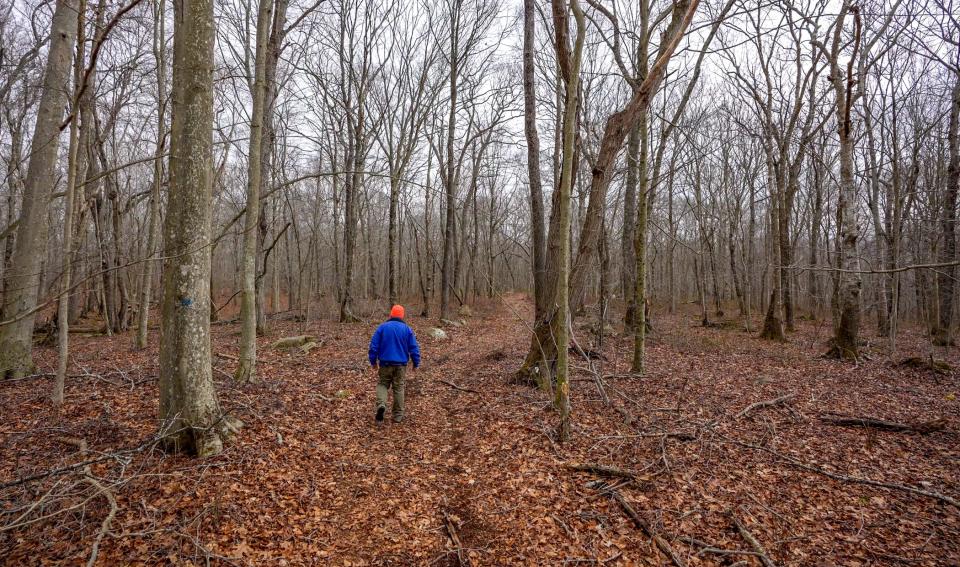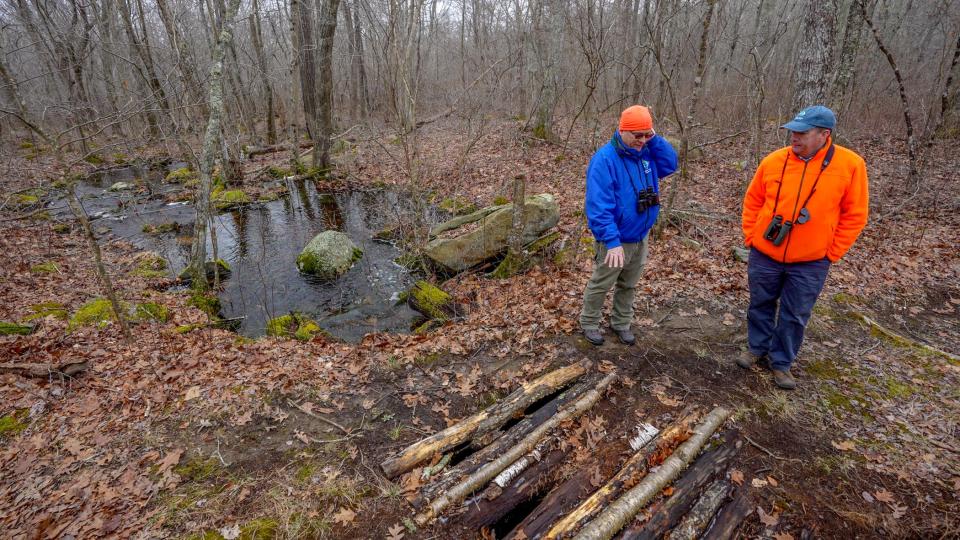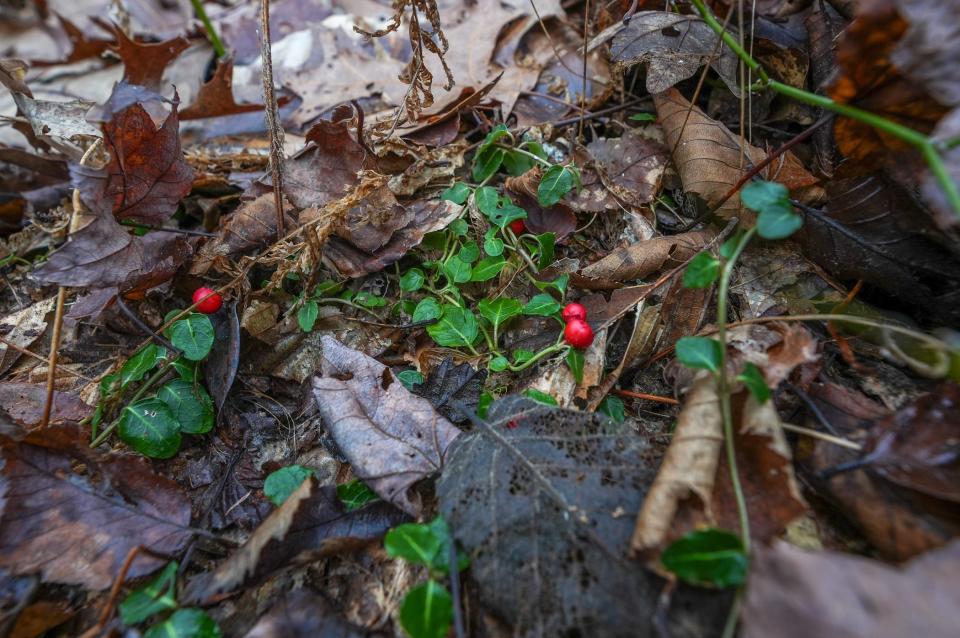This woodland was once targeted for a solar farm. Now, it's protected by the Audubon Society.
NORTH KINGSTOWN — The Audubon Society of Rhode Island’s newest property acquisition isn’t unique in terms of habitat type: upland expanses of American beech, yellow birch and oak forest surrounded by squishy tracts of red maple swamp.
But Congdon Wood is special in other ways.
Certainly, because of its size. At 300 acres, the Saunderstown property near the South Kingstown line stands out in a corner of Washington County that has seen a lot of new housing construction in recent decades.
Finding an undeveloped parcel of woodlands here is virtually unheard of these days, and this refuge becomes the fourth-largest among the 9,800 acres that Audubon of Rhode Island protects.
And then there’s the location, at the headwaters of the Saugutucket River, making it all the more important to prevent the land from being developed.
So when Jeff Hall, executive director of Audubon of Rhode Island, got a call out of the blue from a lawyer offering a gift of the property from his clients, Hall didn’t have to think too hard.
“It’s the unfragmented habitat that makes this such a special place,” he said.

Wooded property once targeted for solar panels was donated as a gift
Hall spoke while leading a walk through Congdon Wood on a recent morning with Scott Ruhren, senior director of conservation with Audubon of Rhode Island. The property isn’t open to the public, and whether it ever will be is still uncertain. Access is an issue, because the land is nestled between blocks of private property.
Despite the limitations on public access, Hall said it was a no-brainer for Audubon to take ownership and become stewards of the land, because of its importance as wildlife habitat for everything from owls to bobcats, and its critical location in the 11,000-acre watershed of the Saugutucket, an 8-mile-long river that flows into Point Judith Pond in South Kingstown and eventually to Block Island Sound.

“As you can imagine, the development pressure here is huge,” Hall said.
Indeed, the property was targeted for solar development just a few years ago, but the plan for what would have been one of the largest projects of its kind in Rhode Island in its original iteration was soon dropped in the face of community opposition after getting caught up in larger questions about renewable energy and open space.
While solar development makes sense to reduce greenhouse gas emissions, there’s also value in preserving forests as carbon sinks, among a host of other ecological benefits.
The land had been owned by the Congdon and Cruickshank families for years and, aside from some periodic logging, had largely been left alone, said Hall. The forest is relatively young and fortunately free of invasive plant species like barberry or autumn olive that plague other wild places.

Saugutucket headwaters are found within the forest
A 30-minute walk into the property brings you to the headwaters of the Saugatucket. There’s no raging river here, just a picturesque stream that courses gently around boulders carpeted in lichen and moss. As the river continues south, it widens as more brooks and rivulets empty into it.
Ruhren said that if the land were developed, it could have added nutrients or other pollutants to the river.
More: Solar projects razed a 1,000 acres of trees in 5 years. Would this bill protect forests?
“With some of the rainstorms we’ve been having, it’d probably look like chocolate milk because of all the soil erosion,” he said.
The river is home to brook trout, a native fish that loves cool, shaded waters. And the surrounding forest is full of warblers, woodpeckers and other year-round resident birds, including species listed by Audubon as priorities for protection.

Ruhren pointed along the side of the trail where the leaf litter had been disturbed. It looked like turkeys had been foraging underneath for partridgeberry, he said.
Because of its size and proximity to the coast, the forest also serves as a stopover for migratory birds that need a rest and a meal before continuing on their way.
Adjacent to Congdon Wood are other protected areas, creating a greenway off Route 138. Hall said there are future possibilities for expansion.
“We’re hoping a preserve like this can spur other people to protect their land,” he said.
This article originally appeared on The Providence Journal: Congdon Wood was going to be a solar farm. Now, it's a wildlife refuge.

